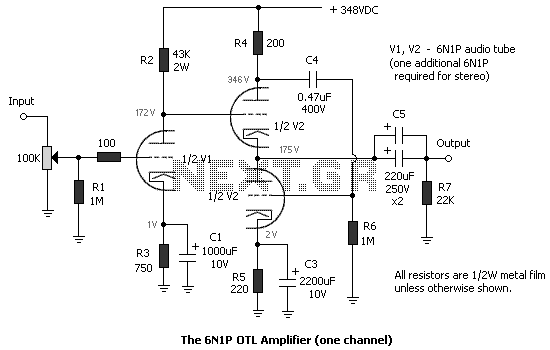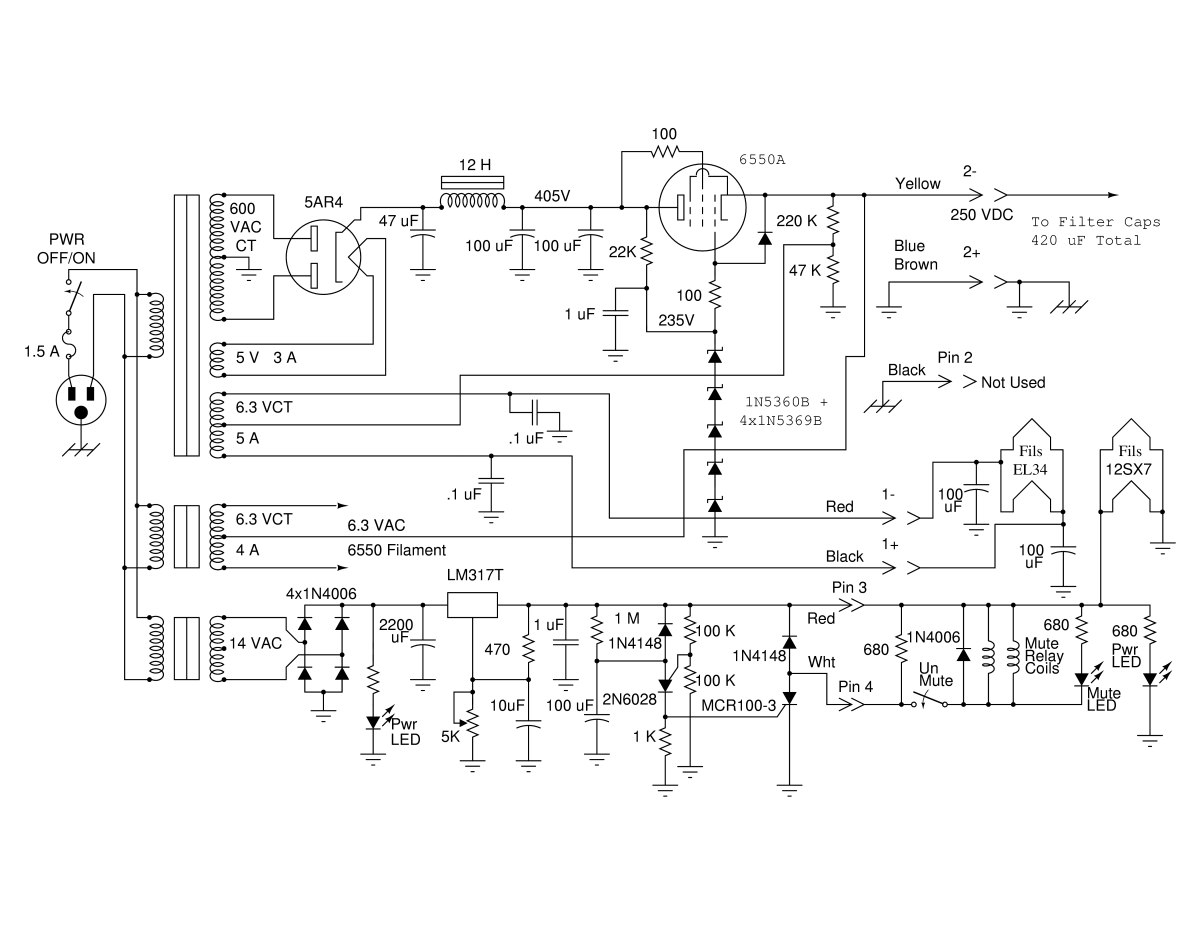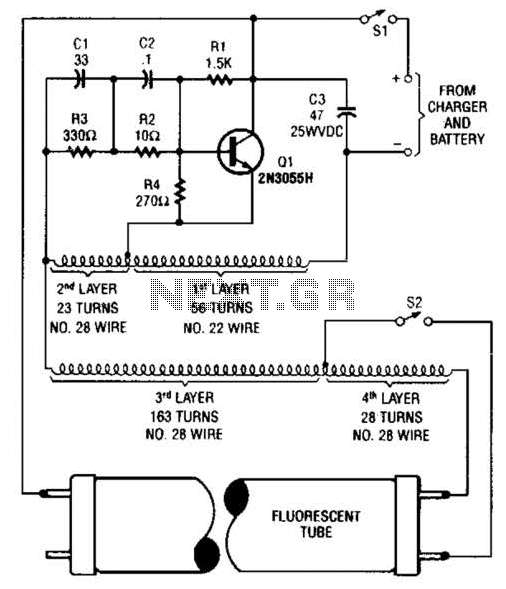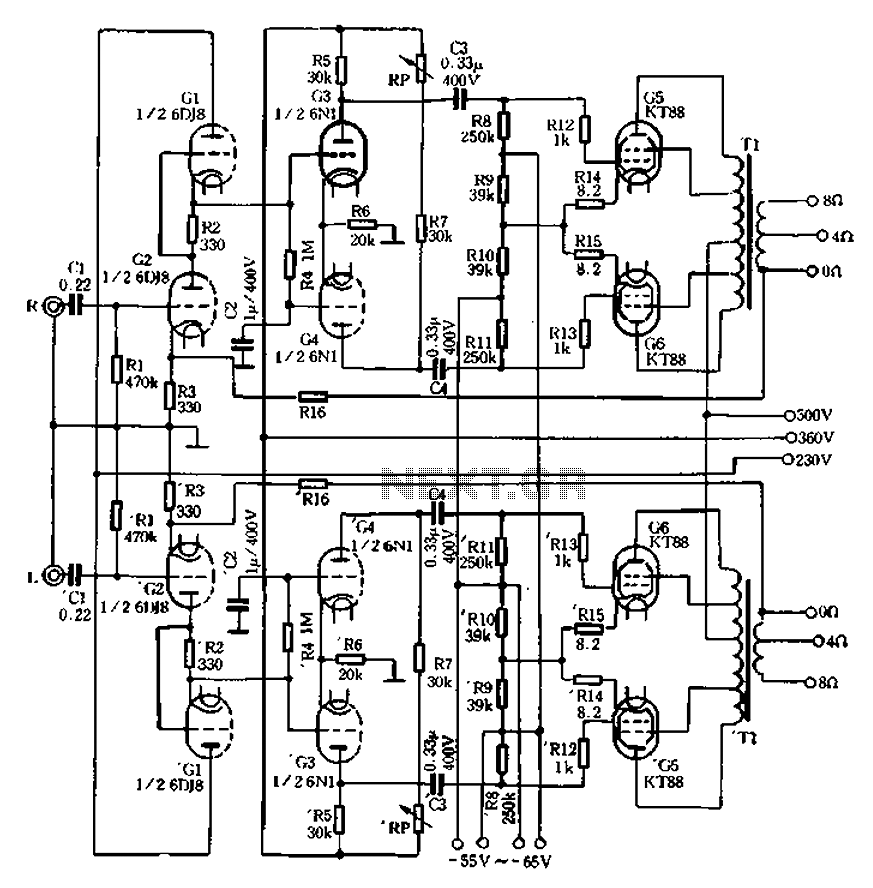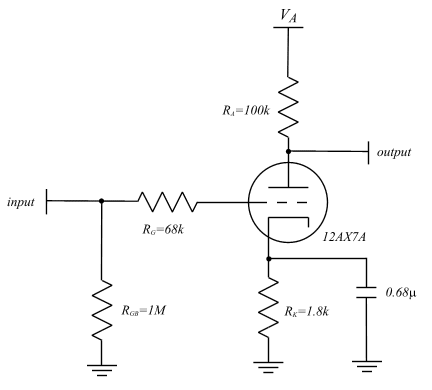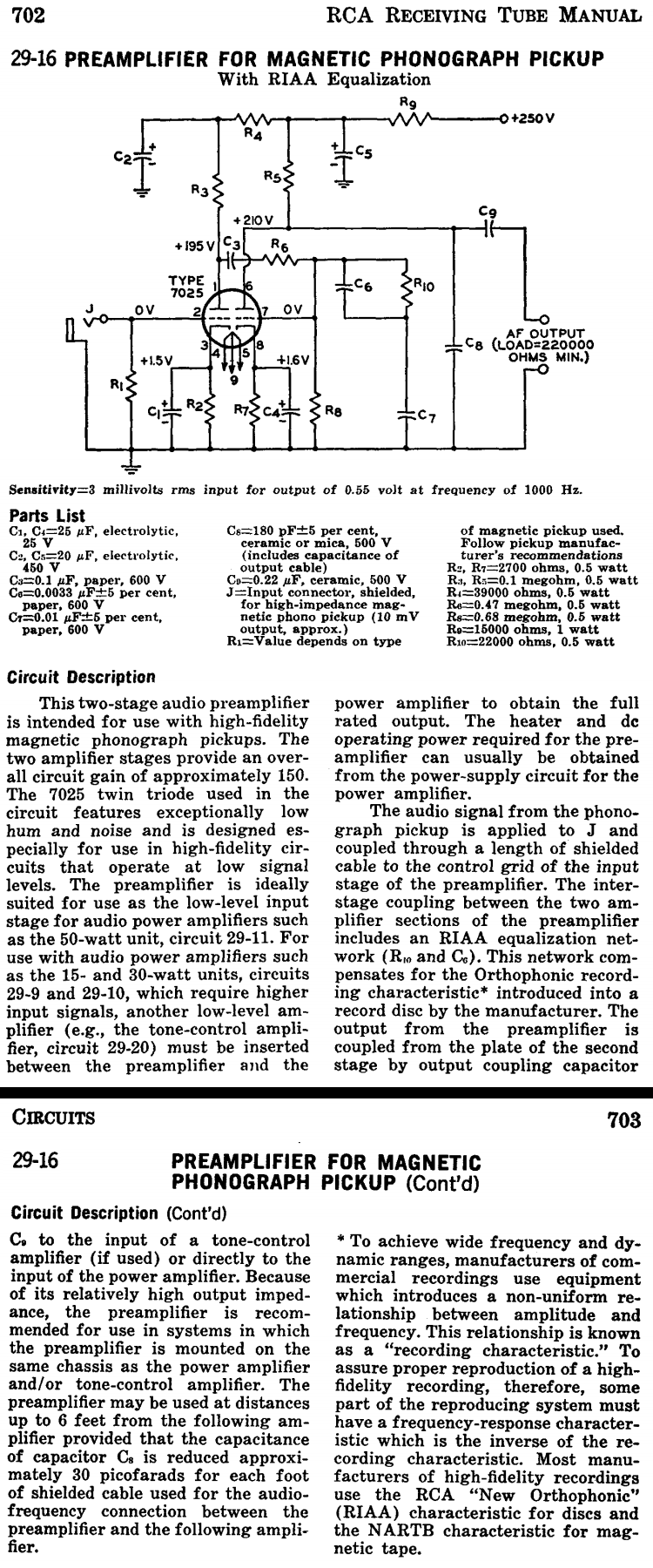
The 125 Vacuum Tube Pitch Theremin
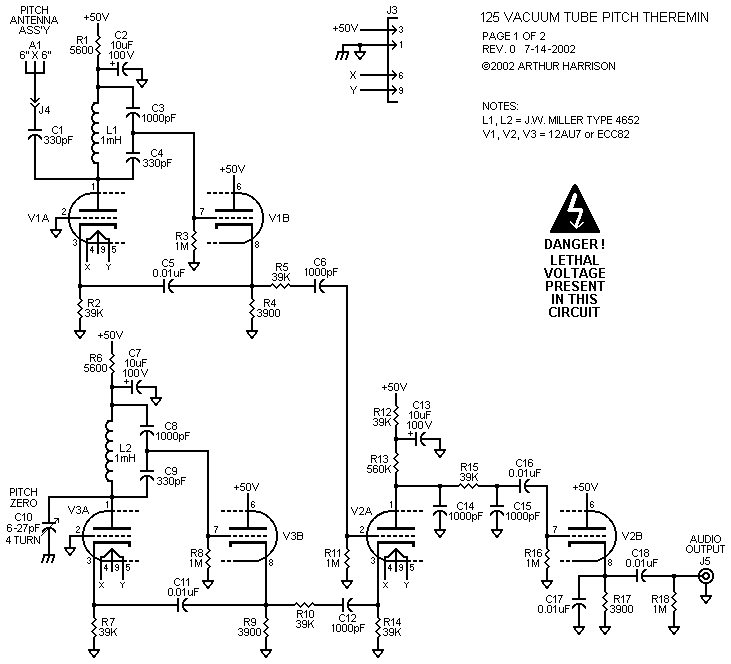
The circuit operates using AC mains voltage and other high voltages that pose risks of injury or death. The 125 employs a basic heterodyne configuration, where the outputs of two similar radio-frequency Colpitts oscillators are fed into a mixer, generating their difference frequency as an audible tone. A widely used vacuum tube, the dual-triode 12AU7 (or its European equivalent, the ECC82), is specified. Exceptional frequency stability across temperature variations is achieved due to the low temperature coefficient of tube interelectrode capacitance, first-order cancellation between the two similar oscillators, and the utilization of stable frequency-determining inductors and capacitors. In fact, the temperature stability of the 125 theremin rivals that of many more complex solid-state instruments. While some theremin pitch variable oscillators incorporate a second resonant circuit to enhance hand-sensing distance, the 125 theremin does not.
The circuit design of the 125 theremin exemplifies a classic approach to audio synthesis through heterodyning, utilizing two Colpitts oscillators that operate at frequencies close to one another. By mixing the outputs of these oscillators, the circuit generates a difference frequency, which is perceived as an audible tone. This method is particularly effective in producing musical notes that can be modulated by the proximity of the player's hands, allowing for expressive performance capabilities.
The choice of the dual-triode 12AU7 vacuum tube is significant, as it provides the necessary amplification and stability for the oscillators. The characteristics of the 12AU7, including its low noise and high gain, contribute to the overall performance of the theremin. The design emphasizes temperature stability, which is crucial for maintaining consistent pitch and tone quality. This is achieved through careful selection of components, particularly inductors and capacitors with low temperature coefficients.
The absence of a second resonant circuit in the 125 theremin design indicates a focused approach to simplicity and reliability. While this may limit the hand-sensing distance compared to other models that utilize additional circuitry, it enhances the overall stability and ease of use. The 125 theremin stands out as an effective instrument for both amateur and professional musicians, offering a unique blend of vintage technology and modern performance standards. Overall, the circuit design reflects a deep understanding of electronic principles and a commitment to creating a reliable and expressive musical instrument.The circuit uses AC mains voltage and otherhigh voltages that can cause injury or death. The 125 is a basic heterodyne configuration, in which the outputs of two similar radio-frequency Colpitts oscillators are fed to a mixer, producing their difference frequency as an audible tone. A popular vacuum tube, the dual-triode 12AU7 (or its European equal type ECC82), is specified. Exceptional frequency stability for temperature variation is achieved, thanks to the low temperature coefficient of tube interelectrode capacitance, first-order cancellation between the two similar oscillators, and the use of stable frequency-determining inductors and capacitors. In fact, the temperature stability of the 125 theremin rivals that of many, much more complex, solid-state instruments.
While a second resonant circuit is used in some theremin pitch variable oscillators to increase hand-sensing distance, the 125 theremin exclu 🔗 External reference
The circuit design of the 125 theremin exemplifies a classic approach to audio synthesis through heterodyning, utilizing two Colpitts oscillators that operate at frequencies close to one another. By mixing the outputs of these oscillators, the circuit generates a difference frequency, which is perceived as an audible tone. This method is particularly effective in producing musical notes that can be modulated by the proximity of the player's hands, allowing for expressive performance capabilities.
The choice of the dual-triode 12AU7 vacuum tube is significant, as it provides the necessary amplification and stability for the oscillators. The characteristics of the 12AU7, including its low noise and high gain, contribute to the overall performance of the theremin. The design emphasizes temperature stability, which is crucial for maintaining consistent pitch and tone quality. This is achieved through careful selection of components, particularly inductors and capacitors with low temperature coefficients.
The absence of a second resonant circuit in the 125 theremin design indicates a focused approach to simplicity and reliability. While this may limit the hand-sensing distance compared to other models that utilize additional circuitry, it enhances the overall stability and ease of use. The 125 theremin stands out as an effective instrument for both amateur and professional musicians, offering a unique blend of vintage technology and modern performance standards. Overall, the circuit design reflects a deep understanding of electronic principles and a commitment to creating a reliable and expressive musical instrument.The circuit uses AC mains voltage and otherhigh voltages that can cause injury or death. The 125 is a basic heterodyne configuration, in which the outputs of two similar radio-frequency Colpitts oscillators are fed to a mixer, producing their difference frequency as an audible tone. A popular vacuum tube, the dual-triode 12AU7 (or its European equal type ECC82), is specified. Exceptional frequency stability for temperature variation is achieved, thanks to the low temperature coefficient of tube interelectrode capacitance, first-order cancellation between the two similar oscillators, and the use of stable frequency-determining inductors and capacitors. In fact, the temperature stability of the 125 theremin rivals that of many, much more complex, solid-state instruments.
While a second resonant circuit is used in some theremin pitch variable oscillators to increase hand-sensing distance, the 125 theremin exclu 🔗 External reference
Warning: include(partials/cookie-banner.php): Failed to open stream: Permission denied in /var/www/html/nextgr/view-circuit.php on line 713
Warning: include(): Failed opening 'partials/cookie-banner.php' for inclusion (include_path='.:/usr/share/php') in /var/www/html/nextgr/view-circuit.php on line 713
